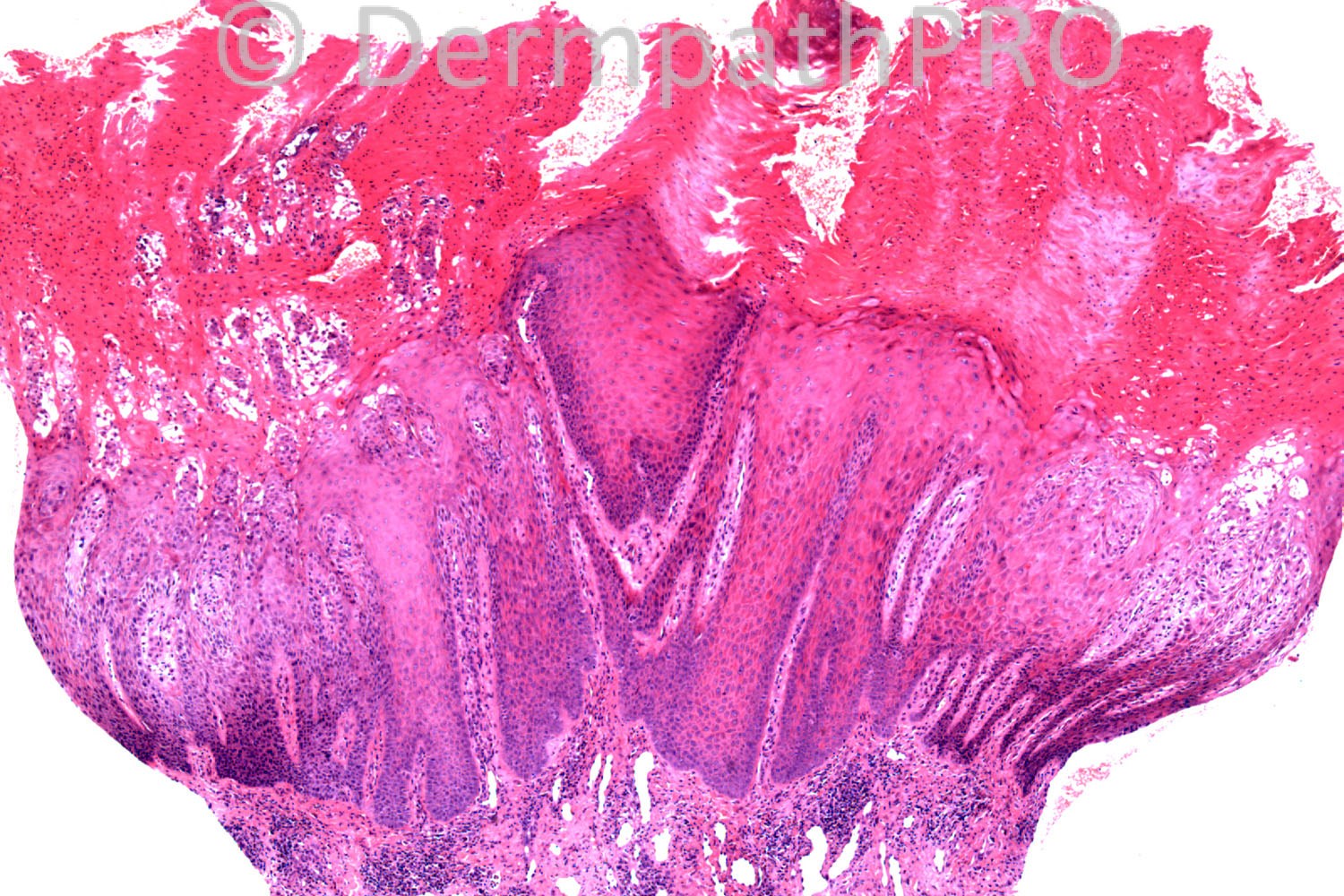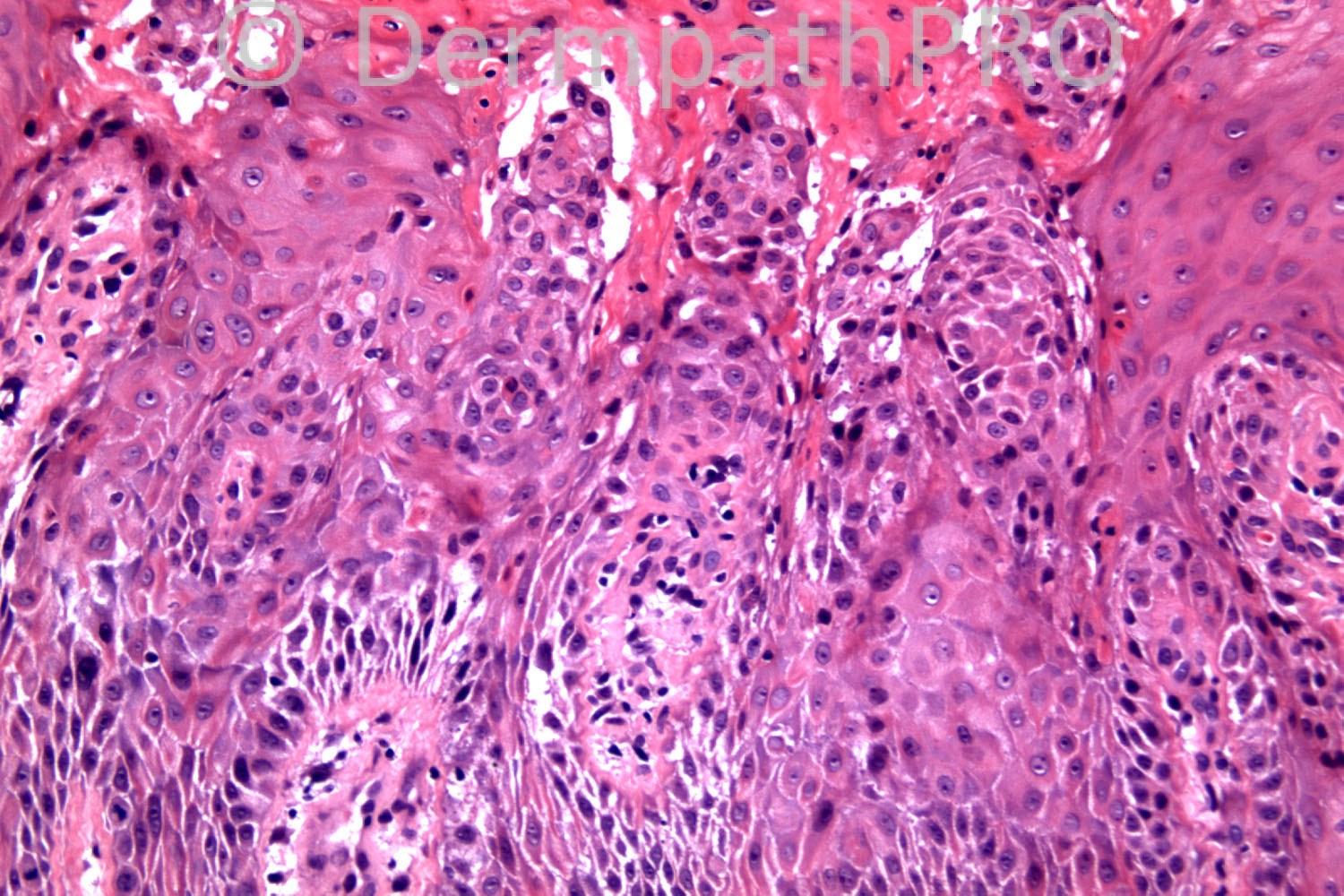Case Number : Case 791 - 28th June Posted By: Guest
Please read the clinical history and view the images by clicking on them before you proffer your diagnosis.
Submitted Date :
90 years-old female, 6/12 hx of multiple warty plaques natal cleft.?V warts, ?dysplastic/malignant.
Case posted by Dr Richard Carr.
Case posted by Dr Richard Carr.







User Feedback